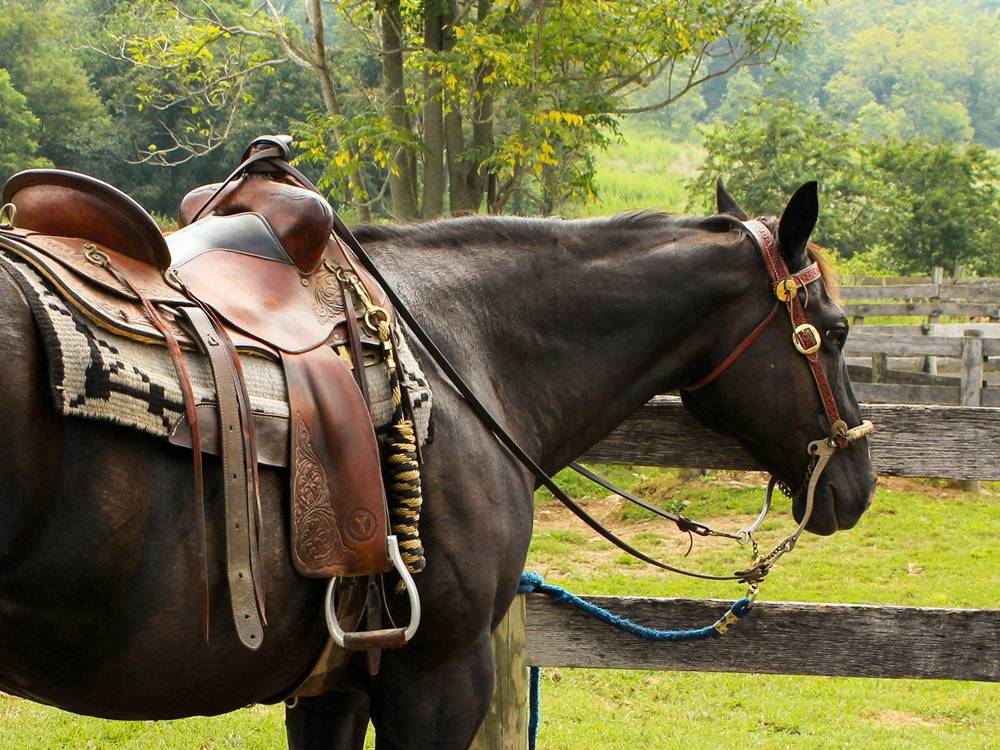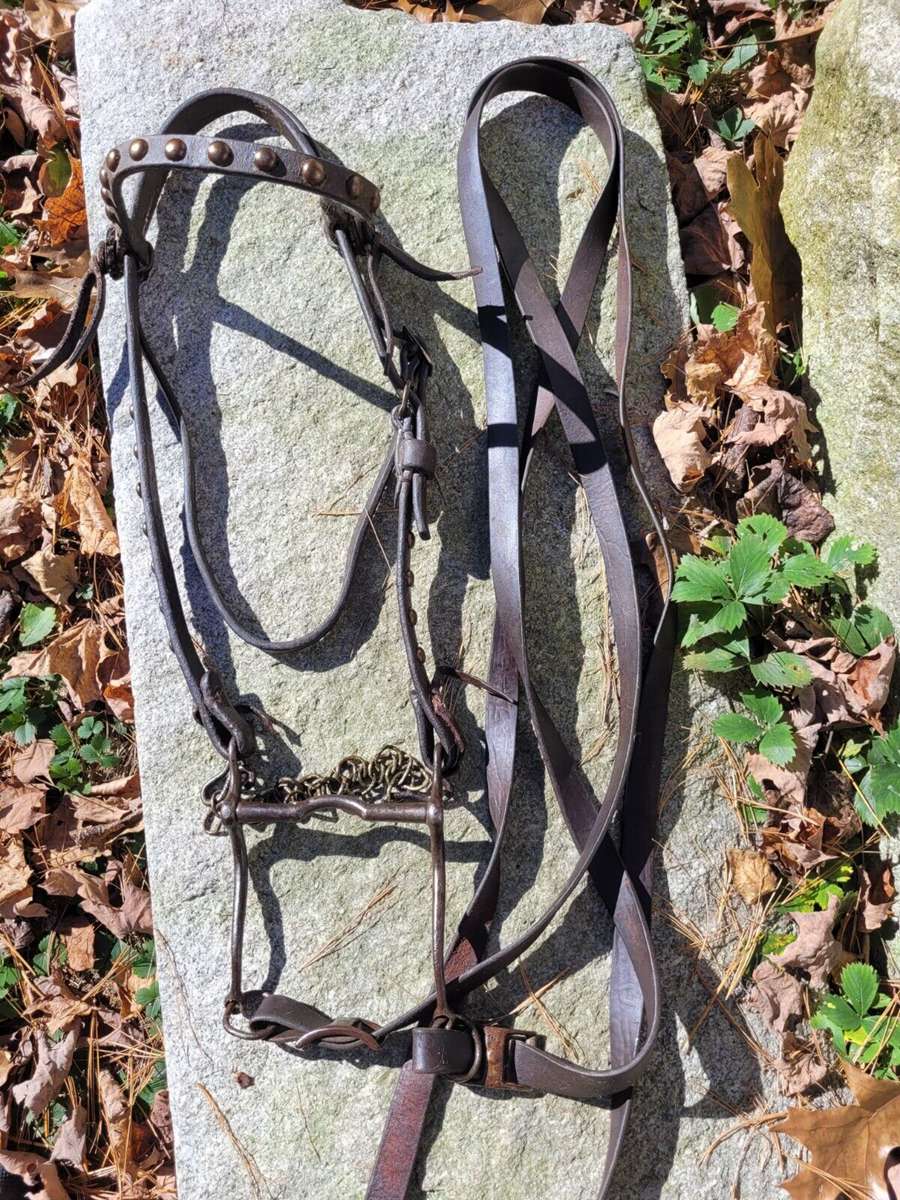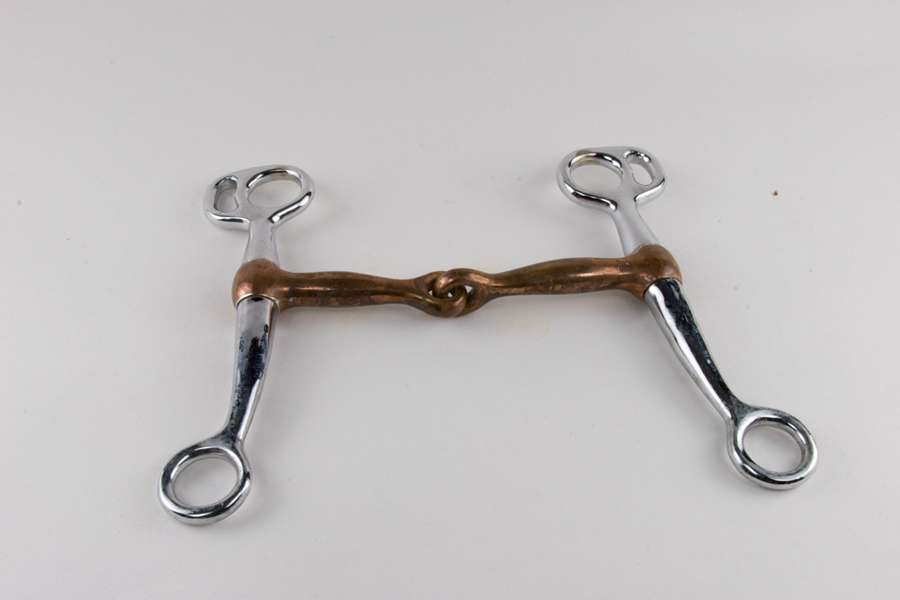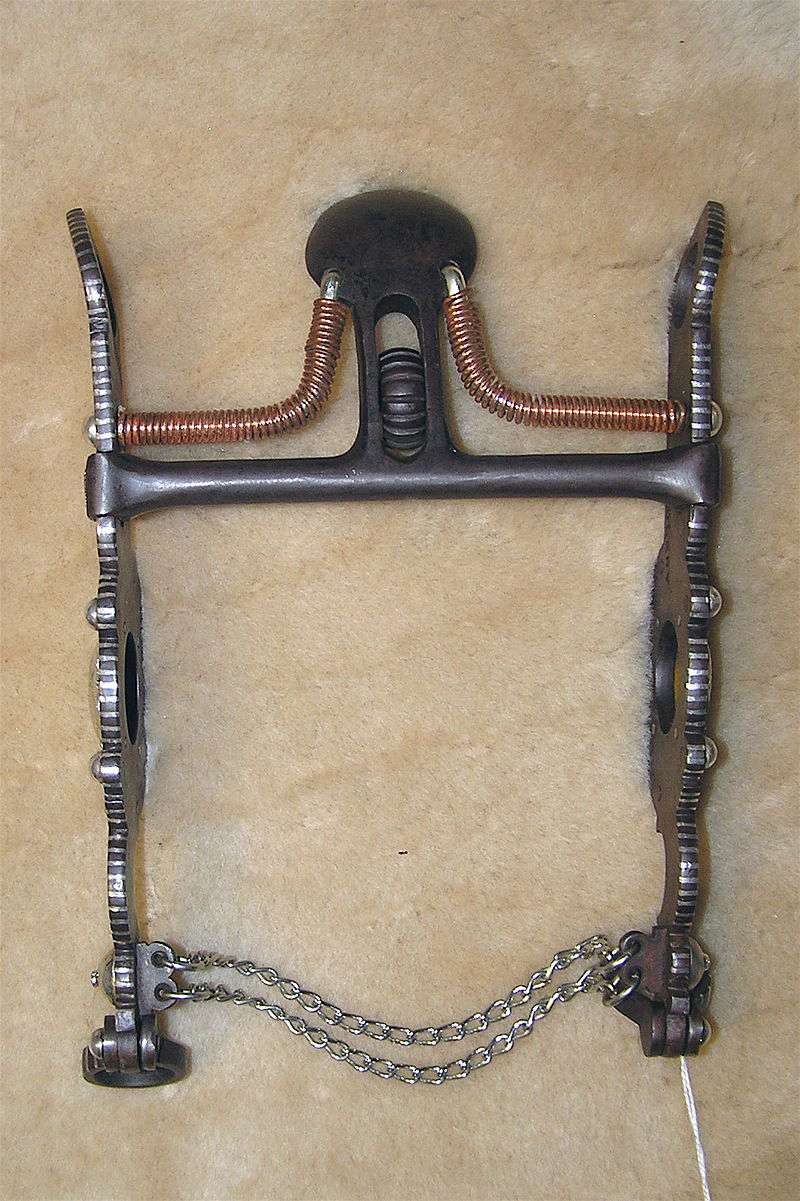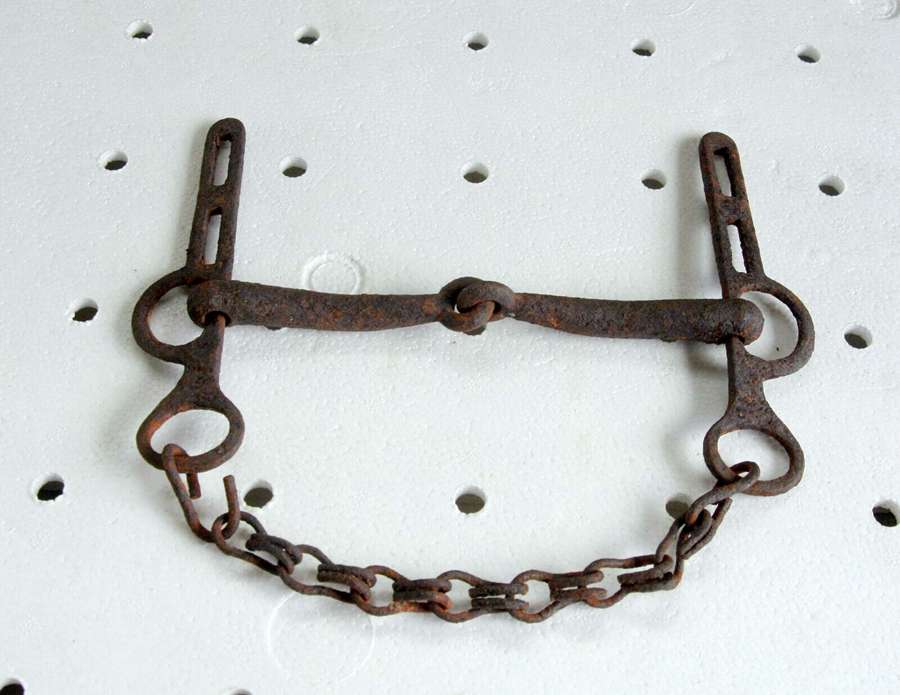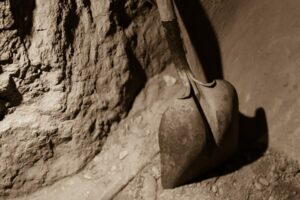Antique horse bits have a rich history that dates back thousands of years. As a collector, you’ll find that understanding the origins and functions of these remarkable pieces can not only enhance your appreciation for their craftsmanship but also help you identify their value. With countless designs and materials used over the centuries, each antique bit tells a unique story of the equestrian world.
You’ll come across various types of antique bits, including those made from rope, bone, horn, or hard wood as early as 3000 BC. As your collection grows, you’ll notice bronze bits from around 1200 BC, as well as nickel bits from the 19th and early 20th centuries. Knowing how various bits were used in warfare and other equestrian activities will help you discern the era they belong to, aiding in proper identification and valuation.
As you embark on your journey into the world of antique horse bits, research and communication with fellow enthusiasts will be invaluable. Engaging with collectors’ groups or online forums will help you stay informed on patterns, markings, and current market value. Equipped with this knowledge, you’ll be able to build a collection that showcases the diverse beauty and ingenuity of antique horse bits.
Table of Contents
History of Antique Horse Bits
Evolution of Horse Bits
The first bits appeared during ancient civilizations, initially made from materials such as rope, bone, horn, or hardwood. As time progressed, bits evolved to incorporate metal components, which allowed for greater control and communication between rider and horse. These early bits have given rise to the diverse range of horse bits that you see today.
Over the centuries, bit designs became more intricate and specialized, adapting to suit various riding disciplines and styles. Two primary bit categories emerged: snaffle bits and curb bits. Snaffle bits work primarily on direct pressure, without leverage, and are often seen as the gentler, more versatile option. In contrast, curb bits use a lever action to apply increased pressure on the horse’s mouth, providing the rider with more control at the expense of potential discomfort for the horse.
Famous Bit Makers
Many well-known bit makers have left their mark on the history of antique horse bits. Among these are the following:
- Oscar Crockett: A prominent 20th-century bit maker, Oscar Crockett specialized in hand-forged bits and spurs. The Crockett Bit and Spur Company, founded in 1928, became renowned for creating high-quality products that were popular among working cowboys, collectors, and enthusiasts alike.
- C.P. Shipley: Operating in the late 19th and early 20th centuries, C.P. Shipley established a reputation for crafting high-quality saddle and harness hardware, including bits and spurs. Ship’s products are still highly sought after by collectors today.
- J.R. McChesney: Known as the “Gal Leg,” J.R. McChesney was an early 20th-century bit and spur maker who introduced innovative designs and manufacturing techniques. The Gal Leg shank style became his trademark, a staple of the McChesney brand that remains popular among collectors.
Each of these bit makers contributed to the rich history of antique horse bits, and their creations reflect the evolution of these essential equestrian tools. As you dive deeper into the world of antique horse bits, you will inevitably encounter a wealth of knowledge and craftsmanship that has shaped both riding styles and the significance of these functional works of art.
Identifying Antique Horse Bits
Recognizing Styles
When identifying antique horse bits, it’s essential to recognize the different styles. Some common styles to look for are:
- Curb bits: These bits feature a solid or broken mouthpiece and a shank that extends from the mouthpiece to the reins attachment. Examples include spade, ranch, and snaffle bits.
- Snaffle bits: These bits have a single-jointed mouthpiece and are a common choice in western horse riding. They provide less severe leverage than curb bits.
- Spade bits: A distinctive style of curb bit, they feature a tall, slender mouthpiece that resembles a spade.
Engravings and Markings
Many antique horse bits have engravings or markings, which can help you identify their origin and value. Look out for markings of famous makers, such as Oscar Crockett or Crockett Spurs. Signs include engraved initials, numbers, or unique patterns on the cheek or shank of the bit. Also, pay attention to the level of detail, as handmade bits often exhibit intricate designs and higher craftsmanship.
Materials and Craftsmanship
Antique horse bits can be made from various materials, such as iron, brass, and silver. It’s important to pay attention to the quality and type of material used, as this will affect the bit’s value. For instance, bits with silver inlay and engravings are considered more valuable.
- Handmade bits: These are often highly sought after due to their unique designs and level of craftsmanship. Handmade bits may feature engraved details, silver inlay, and other embellishments that distinguish them from mass-produced bits.
- Cheekpieces: The shape and design of the cheekpieces can give clues to the bit’s age and origin. Look for unique patterns and shapes in the cheekpieces, such as ornate silver overlays or engravings.
- Mouthpieces: Examine the mouthpiece for wear and signs of age, as this can help indicate the bit’s value. Older bits may have a more polished or patinated appearance from years of use.
Remember to take your time and study each piece carefully to accurately identify antique horse bits. Doing so will allow you to authenticate your collection and increase its value.
Types of Antique Horse Bits
Snaffle Bits
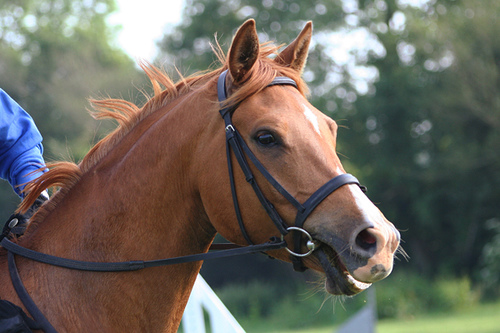
Snaffle bits are one of the simplest and most traditional types of horse bits. They feature a straight or slightly curved mouthpiece, and the rings on each side of the mouthpiece are used to attach the reins. A snaffle bit doesn’t have a shank, which makes it ideal for directing the horse using direct pressure on the corners of the mouth. In antique collections, you might discover snaffle bits made from materials like iron, steel or brass.
Curb Bits
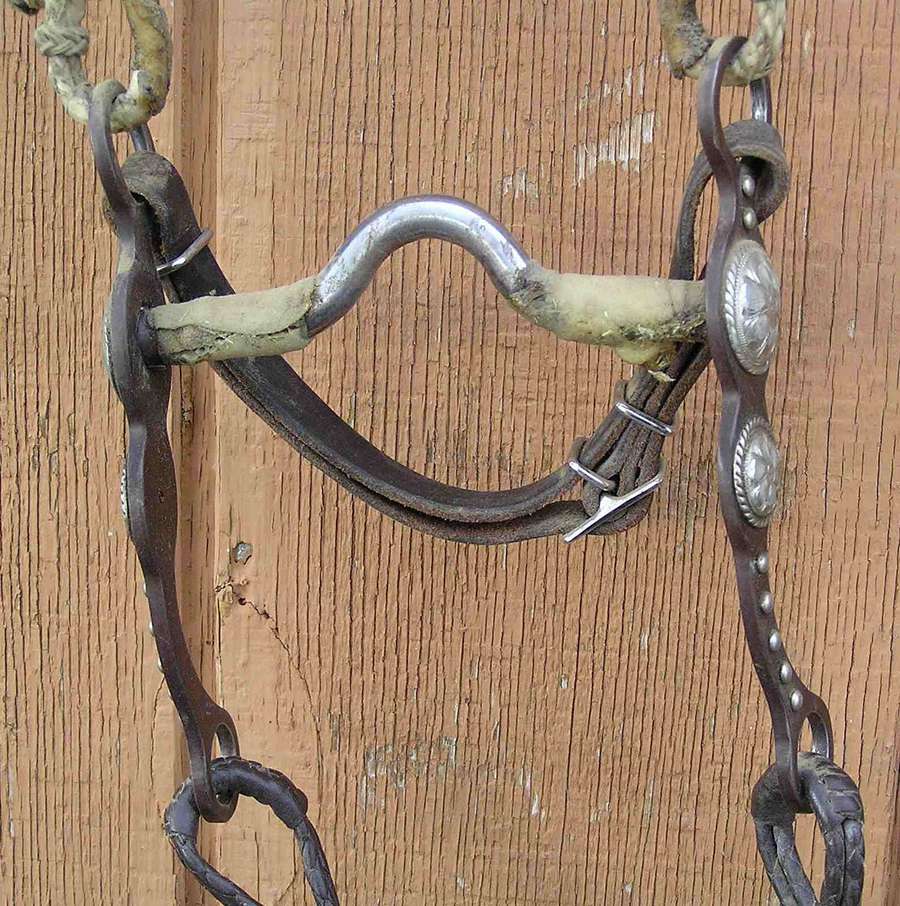
Curb bits are more complex than snaffle bits and are designed to provide leverage. They consist of a mouthpiece, shanks on either side, and a curb chain that runs under the horse’s chin. The shanks come in various lengths and shapes, and some antique curb bits feature intricate silver inlays or other decorations. Generally, these types of bits were more popular among Western-style horsemen, and Oscar Crockett is a notable craftsman, known for his fine Crockett Spurs and curb bits.
Spade Bits
Spade bits are associated with the Spanish-style or “Vaquero” horsemanship traditions. These bits consist of a high “spade”-shaped port, which can apply considerable leverage on the horse’s tongue and roof of the mouth. A well-made antique spade bit may showcase exceptional craftsmanship, with engraved silver inlays and decorative touches. It’s important to note that these bits were used in conjunction with a specific style of riding and training and are typically found in Western or Spanish-style horse equipment collections.
Military Horse Bits
Military horse bits were often designed with both function and decoration in mind. These bits can vary from simple iron snaffles to more elaborate curb bits with detailed silver inlay work. Many antique military bits may feature the insignia or markings of the cavalry units or regiments they belonged to, and collectors often seek these bits not only for their horsemanship significance but also for the historical value they represent.
Indian Horse Bits
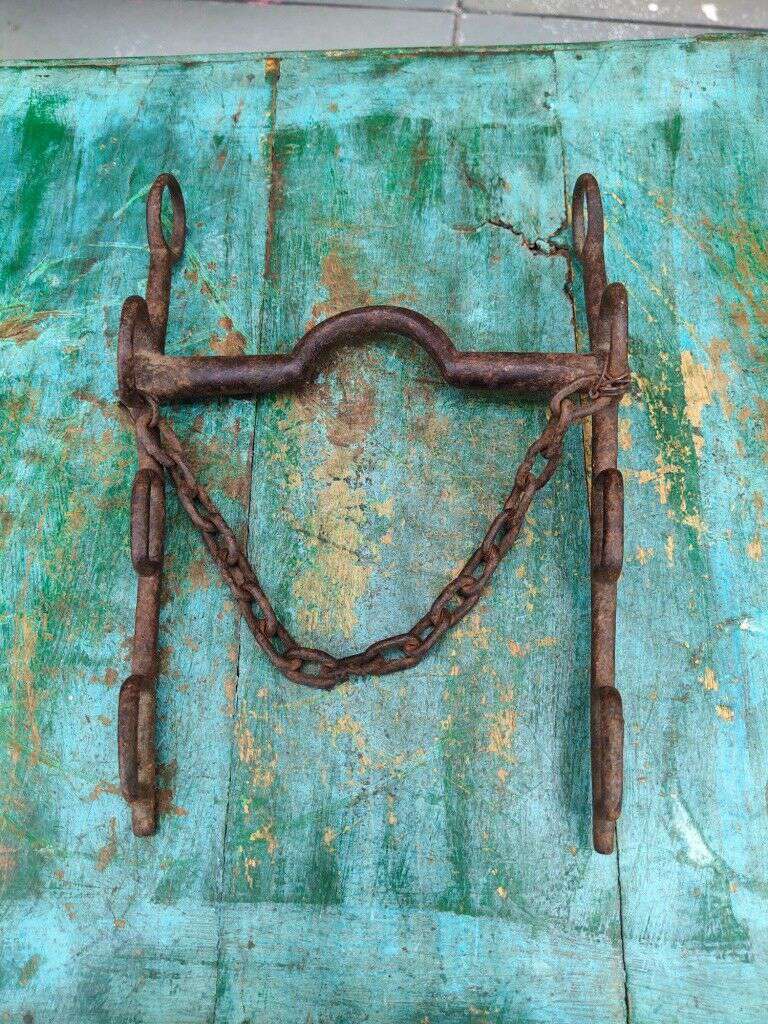
Indian horse bits are unique in their design and function. Often made using intricate metalwork, Indian bits tend to emphasize both beauty and practicality. The mouthpiece may feature elaborate carvings or designs, and some examples even include precious metals and gemstones as part of the decoration. These bits can range from simple snaffle designs to more complex curb bits, reflecting the diverse traditions and horsemanship styles found across India.
Remember, when trying to identify the value of antique horse bits, factors such as age, condition, material, and craftsmanship play an important role. It’s essential to research their history and study specific details before making any assumptions about their value.
10 Factors to Identify & Value Antique Horse Bits
1. Age
When evaluating antique horse bits, age plays a significant role in determining their value. Older bits often hold a higher intrinsic value due to their historical significance and rarity. As you delve deeper into bit identification and valuation, it’s essential to consider the age of the items in question.
The age of a horse bit can sometimes be determined by its design or markings. For example, certain bits were only produced during specific time periods or for particular military units. If you know the time when a bit was produced, this information can impact its valuation. Keep in mind that older bits with unique designs, military affiliations, or historical connections may command higher prices.
It may also be helpful to look for unique maker’s marks, which can be an indicator of age. Prominent bit manufacturers typically marked their products with their distinct logo, initials, or symbols. Identifying these markings can provide a clue as to the age of the piece, leading to a more accurate valuation.
Here is a table that provides the average valuation for different age categories of antique horse bits:
| Age Range | Average Valuation |
|---|---|
| Pre-1900 | $200 – $400 |
| 1900 – 1930 | $150 – $300 |
| 1930 – 1950 | $100 – $200 |
| 1950 – 1970 | $50 – $100 |
| 1970 – Present | $10 – $50 |
2. Brands
Understanding and identifying different brands of antique horse bits is crucial for determining their value. Different manufacturers and makers have varying degrees of rarity and desirability, which can greatly impact the worth of a horse bit. In this section, we will discuss some well-known and sought-after brands of antique horse bits.
Charles Conklin, Hernando Garcia, and G.S. Garcia are among some of the acclaimed bit and spur makers whose creations are highly valued. Handmade bits from these makers often possess distinguishable marks that help in proper identification. While some brands may have more value attached to their name, the condition and rarity of the bit can still have a significant impact on its overall value.
Here’s a valuation table to give you an idea of how the brand can affect the average valuation of antique horse bits:
| Brand | Average Valuation |
|---|---|
| Charles Conklin | $500 – $600 |
| Hernando Garcia | $450 – $550 |
| G.S. Garcia | $500 – $600 |
| Unmarked/Unidentified | $100 – $200 |
Remember, the prices mentioned in the table are only an indication, and other factors such as condition, age, and rarity should also be considered while determining the value of antique horse bits.
To ensure accurate identification, familiarize yourself with the trademarks and logos utilized by different manufacturers. The marks are often found on particular parts of the bit, such as the cheekpieces or mouthpiece. In some cases, they may be stamped or engraved into the metal.
Taking the time to learn about various antique horse bit brands will prove beneficial when evaluating the collectibility and potential investment worth of a piece. By knowing the story and history behind each brand, as well as recognizing their marks and characteristics, you can make informed decisions when building your collection of antique horse bits.
3. Materials
When it comes to antique horse bits, the materials used in their construction play a significant role in determining their value. Different materials possess unique characteristics that impact the desirability and worth of these collectible items.
Stainless steel is a popular and highly sought-after material for antique horse bits. It is valued for its durability and resistance to rust, which helps maintain the item’s quality over time. Horse bits made of stainless steel are often more valuable than those made of less desirable materials.
A less desirable material than stainless steel is nickel-plated metal. Nickel-plated bits tend to be less valuable, as they are prone to flaking with wear. This flaking can reveal the core metal underneath, resulting in rough patches that could potentially injure a horse’s lips and tongue. Additionally, these bits tend to rust, which negatively impacts their appearance and value.
Here is a valuation table illustrating how the materials used in antique horse bits can impact their average price:
| Material | Average Valuation |
|---|---|
| Stainless Steel | $400 – $500 |
| Nickel-Plated Metal | $150 – $250 |
4. Styles
There are various styles of antique horse bits that can greatly impact their value. Identifying the style of a bit is crucial in appraising its worth. Let’s take a closer look at some of the more common and collectible styles of horse bits.
Swivel Bits
Swivel bits are composed of two separate pieces that move independently, allowing for more precise communication between the rider and the horse. This style offers more control and flexibility compared to standard fixed bits, making them valuable for collectors. Here are some average valuations based on swivel bit variations:
| Swivel Bit Variations | Average Valuation |
|---|---|
| Standard Swivel | $100 – 200 |
| Silver Overlay | $300 – 400 |
Curb Bits
Curb bits are designed with longer shank lengths, which serves to increase the leverage applied on the horse’s bars and chin. As a result, they are particularly effective in controlling powerful horses. The valuations for different types of curb bits are as follows:
| Curb Bit Variations | Average Valuation |
|---|---|
| Standard Curb | $150 – 250 |
| Silver Inlay | $200 – 300 |
| Handcrafted Ornate Design | $350 – 450 |
Snaffle Bits
Snaffle bits are a popular choice among riders for their simplicity and direct communication with the horse. They apply even pressure to the horse’s bars without leverage, making them a gentler option. Here’s a valuation table for snaffle bit styles:
| Snaffle Bit Variations | Average Valuation |
|---|---|
| Basic Snaffle | $50 – 100 |
| Decorative Cheeks | $150 – 200 |
| Silver Overlay | $200 – 300 |
Spanish-Style Bits
These bits are typically ornate and feature intricate designs with a rich history, making them highly sought after by collectors. The valuations can vary greatly depending on the level of craftsmanship and materials used:
| Spanish-Style Bit Variations | Average Valuation |
|---|---|
| Simple Design | $200 – 300 |
| Elaborate Silver Overlay | $400 – 600 |
| Rare or Unique Patterns | $700 – 1000 |
Keep in mind that these valuations are just guidelines, and various factors can influence the value of antique horse bits. Understanding the style of a bit is essential in determining its worth and can help you make informed decisions when adding to your collection.
5. Size
When identifying and valuing antique horse bits, size plays a crucial role in determining their worth. Horse bits come in various sizes geared towards different types of horses and their mouths. The larger the bit, the more valuable it may be, as it usually requires more craftsmanship and material.
The size of a horse bit affects its usability and comfort for the horse, which in turn can have an impact on its demand and value. Larger bits may be more suitable for bigger horses with wider mouths, while smaller bits may cater to ponies or young horses. Assessing the size properly can help you make an informed decision when purchasing or appraising an antique horse bit.
To better understand how size affects the value of antique horse bits, consider the following valuation table:
| Horse Bit Size (Mouthpiece Length) | Average Valuation |
|---|---|
| 3.5 inches (for small ponies) | $200 – $250 |
| 4 inches (for medium ponies) | $250 – $300 |
| 4.5 inches (for large horses) | $300 – $400 |
| 5 inches (for extra-large horses) | $450 – $500 |
6. Patina
Patina is an essential factor to consider when identifying and valuing antique horse bits. The presence of patina can indicate the age and historical significance of a piece, thereby affecting its desirability and value.
Patina is the natural aging process that occurs on the surface of metal objects, such as horse bits. This process results in a unique, slightly tarnished or discolored appearance due to the formation of a thin layer of oxidation. The presence of a genuine patina on an antique horse bit is highly sought after, as it provides evidence of the bit’s age, rarity, and authenticity.
Different levels of patina can impact the value of an antique horse bit, with certain shades and textures being more desirable than others. Below, you’ll find a valuation table detailing how different patina characteristics may affect the average value of an antique horse bit.
| Patina Characteristics | Average Valuation |
|---|---|
| Uniform, aged appearance | $60 – $100 |
| Distinct color and texture | $80 – $120 |
| Patina absent or excessively worn | $30 – $70 |
| Artificial or forced patina | $10 – $40 |
In assessing the value of an antique horse bit, look for natural, well-preserved patina as a sign of authenticity and age. Be cautious of bits displaying artificial or forced patina, as these could be reproductions or altered items, which may not be as valuable as authentic pieces.
An essential aspect of evaluating the value of a horse bit with patina is knowing how to differentiate between natural and artificial patina. Natural patina typically has a consistent, uniform appearance, while artificial patina may appear uneven, patchy, or overly intense.
When appraising the value of an antique horse bit, considering the patina is just one essential element. Remember to examine other factors like the bit’s design or the type of metal used to construct the piece in conjunction with patina to form a comprehensive understanding of its value.
7. Completeness
When assessing the value of antique horse bits, one important factor to consider is the completeness of the piece. The more complete and intact the bit is, the higher its value will generally be. This includes the presence of all original components, such as the bit rings, mouthpiece, and joints, as well as the overall condition of the piece.
Keep in mind that various types of antique horse bits will have different levels of completeness. For example, some bits may have additional components, such as decorative elements or attachments for the bridle. Ensure that you are familiar with the specific type of bit you are evaluating in order to accurately assess its completeness.
Below is a table illustrating the average valuation of antique horse bits based on their level of completeness:
Final Thoughts
As you explore the world of antique horse bits, it is important to consider the many factors that contribute to their identification and value. First, familiarize yourself with the various styles and materials used in bit production throughout history, such as wood, bone, horn, and different metals.
Pay close attention to the craftsmanship and design elements of the bits you come across, as these can provide crucial clues to their origin and age. For example, markings or engravings may indicate the maker or the time period in which the bit was created.
When assessing the value of antique horse bits, remember that factors such as rarity, condition, and provenance play a significant role. Familiarize yourself with reputable resources like collectible guides or auction catalogs to gain insight into current market trends and prices.
Lastly, consider networking with fellow collectors and enthusiasts, either online or through local clubs and organizations. These connections can serve as valuable sources of knowledge and support as you hone your expertise in the fascinating realm of antique horse bits.
FAQ
How do I identify the age of an antique horse bit?
To identify the age of an antique horse bit, look for markings or stamps on the bit that indicate the maker and the manufacture date. The materials used can also provide clues about the age, with bits made of bronze dating back to 1200 BC, and nickel or stainless steel bits more common in the 19th and early 20th centuries.
What factors affect the value of an antique horse bit?
The value of an antique horse bit depends on several factors, such as:
- Type and style of the bit
- Age and rarity
- Brand or maker
- Material (metal, wood, or other materials)
- Condition and wear
For example, a rare 1880s Vintage North & Judd Bit may be valued between $900 and $1,000, while a Crockett Renalde Silver Overlay Engraved Bit could be valued between $600 and $700.
How do I know if my horse bit is collectible?
You can start by researching the manufacturer of the bit and checking for any identifying marks or stamps on the bit itself. Additionally, joining online forums or Facebook groups dedicated to antique bridle bit collectors can help you learn more about your bit and determine whether it’s a collectible piece.
How do I clean and care for an antique horse bit?
When cleaning an antique horse bit, it’s important to use gentle methods to avoid damaging the piece. Here are some basic steps:
- Gently brush the bit with a soft toothbrush to remove dirt and debris.
- Mix a solution of warm water and mild dish soap. Dip the toothbrush in the solution and continue cleaning the bit.
- Rinse the bit thoroughly under cool, running water.
- Dry the bit using a soft, clean cloth.
To prevent damage or corrosion, store your antique horse bit in a cool, dry place away from high humidity and extreme temperature changes. Regularly check for signs of wear, and address any issues promptly to preserve the bit’s condition and value.

